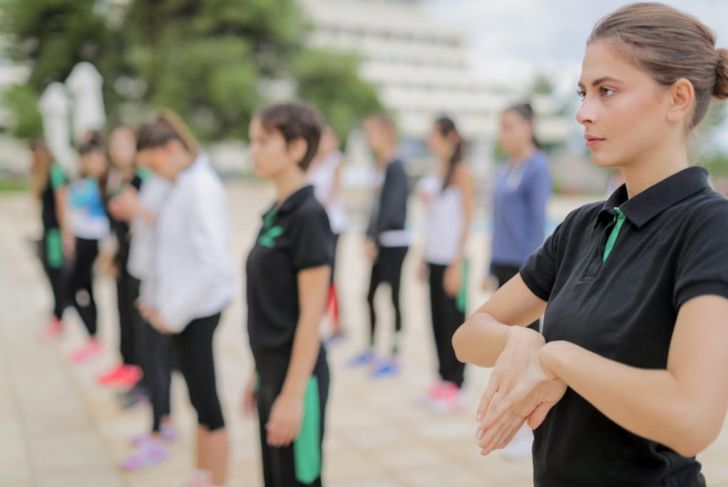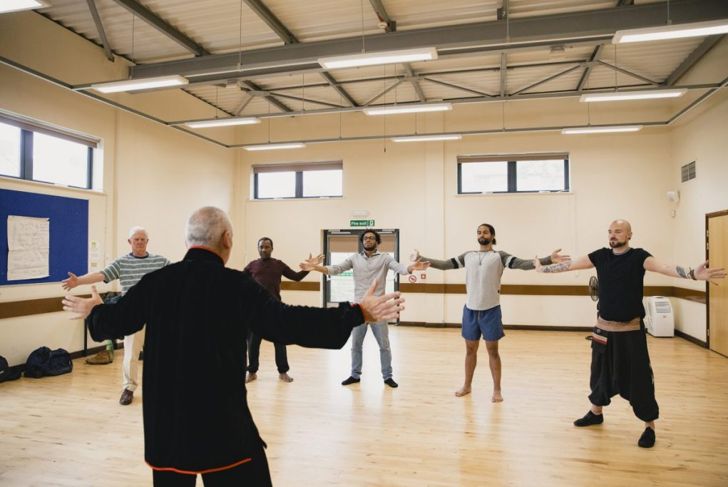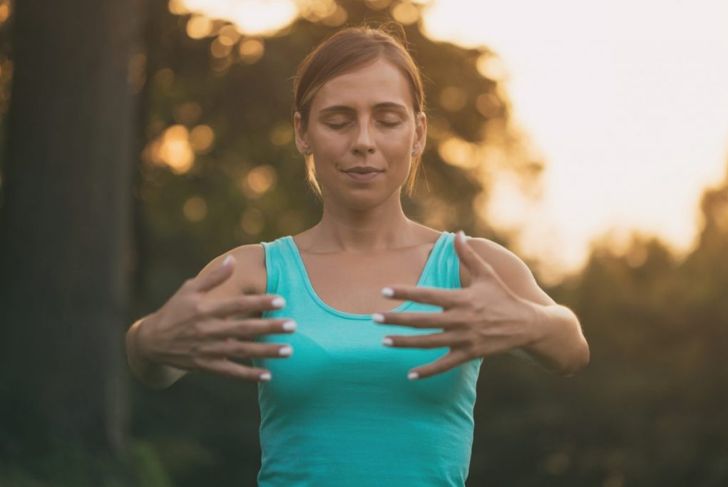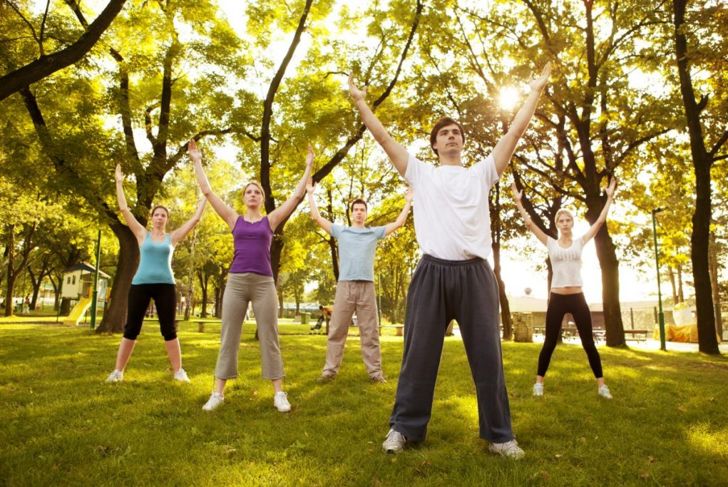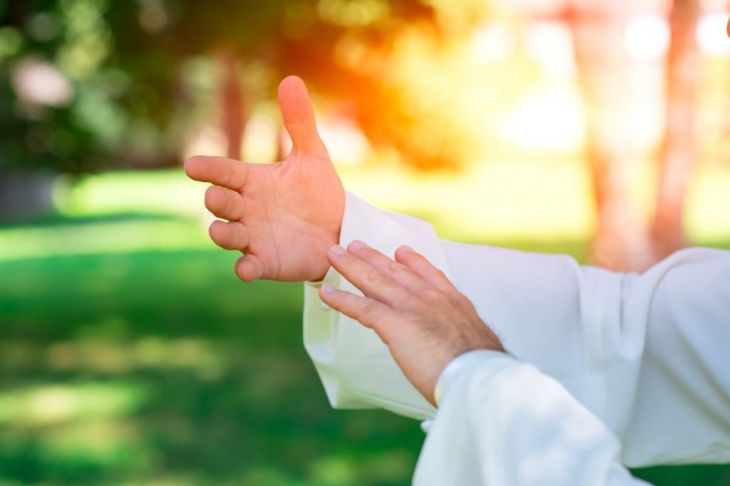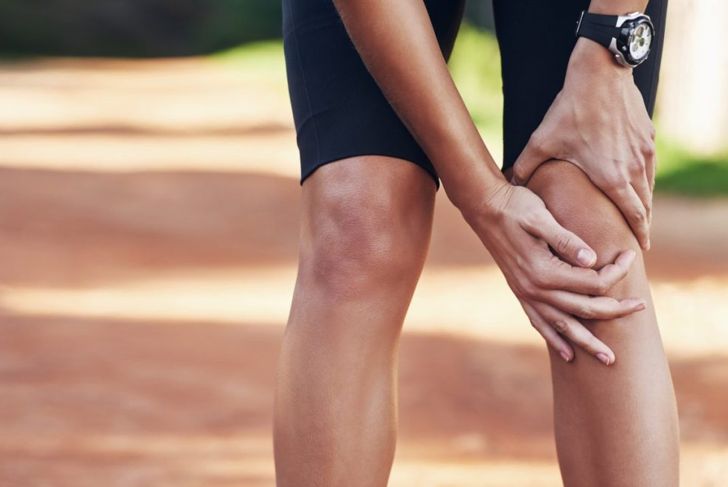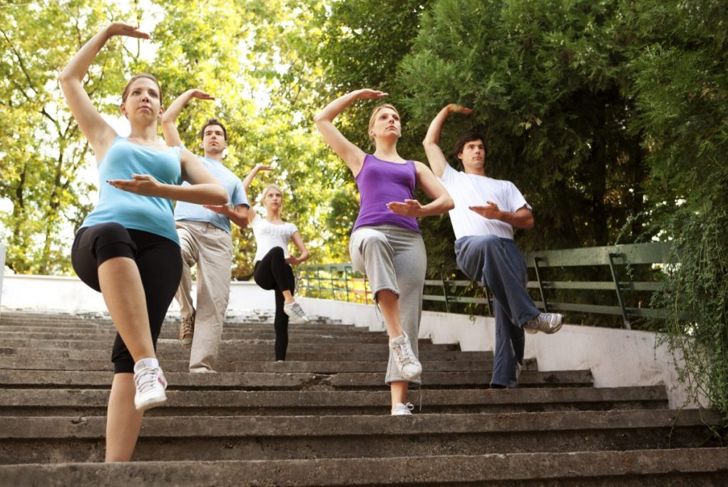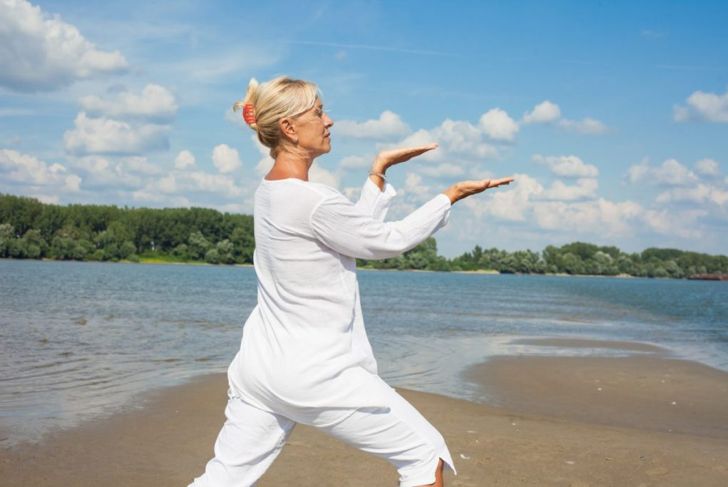Tai chi helps increase balance, stability, and grounding. The fluid movements stem from a subtle shifting of weight, while deep breathing and meditation techniques help relieve stress and encourage muscle relaxation. Yin and yang is an essential concepts in tai chi. They can be described as opposing forces that are ultimately complementary. The pushing and pulling motions common to tai chi postures are one example of utilizing yin and yang in this ancient practice.
Tai Chi Basic Posture
The posture needed for tai chi is simple. Stand in a relaxed manner, and keep feet shoulder-width apart. The toes face inward a bit, the chin and chest are slightly recessed, the hips tucked, and the knees softly bent. This pose feels almost like sitting down on a tall stool.
A Gentle Warm-Up
In tai chi, it’s essential to warm up before beginning a series of postures. Warm-ups encourage the body to be more open and enter a state of well-being. The waist-loosening exercise is an easy tai chi exercise for warming up. Begin with parallel feet a little further than hip distance apart. Arms should remain relaxed by the sides. Rotate the hips in one direction, then the other. Follow along with the arms, allowing them to swing gently as you move. Ensure that every action is fluid and smooth.
Stepping in Tai Chi
Stepping, which signals the change from one move to another, should be gentle and smooth in tai chi. Place one foot in front of the other and balance your weight equally. Try to step slowly with a rolling movement, and keep a low center of gravity.
Around the Globe Posture
Extending the arms out in front of your body, curve them outwards as if holding a large ball with both hands. Imagine one hand is on the very top of the ball and softens the knees. Step sideways with the right leg and turn to the right. While taking this step, allow your body weight to shift to the other side of the body. Inhale while rotating the hands so that the other hand is on top. Finally, move body weight over to the left leg. Exhale while rotating towards the left.
Windmill Motion
The windmill motion in tai chi opens the spine and increases flexibility. Begin with parallel feet wider than shoulder distance. Allow both arms to hang and the shoulders to relax. Point the fingers at the floor and bring them to the center of your body. With the hands in front of your waist, inhale deeply. Lift the arms above the body with fingers pointed toward the ceiling. Extend the body and stretch upward. Arch the spine and body backward. Breathe out. Move hands down the body, and bend toward the floor. Let your arms hang as you bend from your hip downward. Breathe in. Return to the initial posture.
Ball of Energy
Sometimes nicknamed “catch a ball,” this is a power move that often begins or ends a sequence. It’s simple: rub the hands together, then separate them. Move them near one another again, but don’t let them come into contact. Take note of the energy (Qi) and warmth between the hands during this movement. Try stepping along with it.
Pushing and Pulling Palms
Allow the knees to relax, bending slightly. Hold your arms in front and point the palms outward. Exhale and push away using your palms, as though you were pressing against a heavy object. On the inhale, face the palms inward and draw the arms back toward your torso. Continue alternating between pushing and pulling, pairing each movement with the breath.
Knee Rotations
Improving balance can be easy with knee rotations. These movements can also help to improve spine mobility. While standing, bend the knees a little and keep your feet a short distance apart. Put hands on top of knees and point fingers at the other hand’s fingers. Hold the knees and move the legs in a circular motion. First complete a rotation clockwise, then counter-clockwise.
Waving Arm
Soften the knees and move the right arm upward. Look toward the right palm and get ready to turn. Bend the left arm toward the front of your body, near the waist. Take a step right, and rotate the torso toward the right. Breathe out, and ensure that the arms follow the direction of the body. Don’t let the shoulders start the movement; the upper body should lead the rotation. Once on the right side, breathe in and bring the left arm up. Bend the right arm down and in front of the waist. Start from the beginning again by adjusting the weight back to the left leg. Breathe out and move the torso towards the left.
Closing Movement
The tai chi closing movement creates balanced energy and encourages further final relaxation. Begin with feet underneath the hips. Cup the hands near the waist. Allow your eyes to close. Inhale. Picture bringing strong energy upward while moving hands upward. Pause when the hands are about shoulder height and rotate your palms downward. Exhale and think about pushing the energy toward the floor as your hands press downward. Repeat this movement a few times.

 Home
Home Health
Health Diet & Nutrition
Diet & Nutrition Living Well
Living Well More
More